How to Co‐Own a Car
Part 1 of 3:
Setting up Legal Co-Ownership
-
 Put both names on the title to a new car. One way to co-own a car is to purchase it together with another person. You can then put both of your names on the car's title. On the title, you will need to specify how you and the other person are holding the car. There are typically two options:[1][2]
Put both names on the title to a new car. One way to co-own a car is to purchase it together with another person. You can then put both of your names on the car's title. On the title, you will need to specify how you and the other person are holding the car. There are typically two options:[1][2]- Joint tenancy. With this arrangement, the car automatically goes to the other person upon one co-owner's death. To create a joint tenancy, list your names as 'Mary Smith or Michael Jones.'
- In some states, however, creating a joint tenancy allows one owner to sell the car without the other owner's consent. To prevent that from happening, you can list the names as 'Mary Smith and Michael Jones, as Joint Tenants with Right of Survivorship.'
- Tenancy in common. Under this arrangement, you can leave your half of the car to whoever you want if you die. To create a tenancy in common, list your names as 'Mary Smith and Michael Jones.'
- Joint tenancy. With this arrangement, the car automatically goes to the other person upon one co-owner's death. To create a joint tenancy, list your names as 'Mary Smith or Michael Jones.'
-
 Create a joint ownership agreement, if necessary. If you buy from a dealer, you might need to finance the purchase with a loan. The lender might require that both co-owners be on the loan. However, you might have the option of taking the loan out in only one person's name but putting both names on the title. If you choose the second option, then you will need a joint ownership agreement, which should contain the following:[3]
Create a joint ownership agreement, if necessary. If you buy from a dealer, you might need to finance the purchase with a loan. The lender might require that both co-owners be on the loan. However, you might have the option of taking the loan out in only one person's name but putting both names on the title. If you choose the second option, then you will need a joint ownership agreement, which should contain the following:[3]- The statement of agreement: 'Mary Smith and Michael Jones agree as follows:'.
- The details about the loan. 'Mary has entered into an agreement with First Lending Car Loans to take out a car loan for $18,000 to purchase a [insert car details]. Mary has agreed to pay First Lending Car Loans the sum in monthly installments of $350, inclusive of interest, for 60 months, due on the first of every month beginning February 1, 2016.'
- A statement that you own the car equally: 'We intend that this car is owned equally by both of us and we each will pay one-half of the cost.'
- Details about how the person not on the loan will give the money to the borrower: 'Michael agrees to pay Mary $175 one week before payment is due. Mary will then pay First Lending Car Loans in a timely manner.'
- Information on how the person not on the loan can buy out the other owner: 'If Mary no longer wants to own the car, then Michael can enter into an agreement with First Lending Car Loans to take over the payments himself, and pay Marry one-half of the difference, if any, between the car's current resale value and the amount of money still owed.'
- An explanation of how the person on the loan can buy out the other owner: 'Mary may buy the car from Michael by agreeing to be solely responsible for the monthly payments to First Lending Car Loans and by paying Michael one-half the difference, if any, between the car's current resale value and the amount of money still owed to First Lending Car Loans.'
- Whether the ownership percentage will change if one person fails to contribute to the monthly car payment. For example: 'Should either fail to make the required share of the payment, the other may do so. Accordingly, this person's ownership percentage will be increased. If, for example, Mary makes 12 payments without Michael contributing, her share of the car will increase to 60/40.'
- A statement that the agreement can only be modified in writing.
- The signature of both co-owners.
-
 Purchase a share of someone's car. If you already own a car, you can sell a share to someone else. You also could purchase a share of someone else's car.[4] You need to come up with a fair price to pay or charge. Visit the Kelley Blue Book website for information on the current market value for used cars.[5]
Purchase a share of someone's car. If you already own a car, you can sell a share to someone else. You also could purchase a share of someone else's car.[4] You need to come up with a fair price to pay or charge. Visit the Kelley Blue Book website for information on the current market value for used cars.[5]- You must follow your state's procedures for putting another person's name on the registration and title. To find the requirements, visit your state's Department of Motor Vehicles (DMV). In New York, for example, you can't simply add someone to the current registration or title certificate. Instead, you must apply for a new registration and a new title certificate in the names of both owners.[6]
- Buying a used car can trigger different fees that you have to pay. To find the full fee schedule, contact your state's DMV.
-
 Check for liens. Before purchasing a share of someone's car, be sure to check for any liens on the car. A car may have a lien when the owner owes someone money. The creditor then puts a lien on the car to secure the debt. If the car is sold, then the lien holder actually gets his or her debts paid off before the car owner. A lien holder can also foreclose on the car if the debt is not paid. In this situation, the owner loses the car.
Check for liens. Before purchasing a share of someone's car, be sure to check for any liens on the car. A car may have a lien when the owner owes someone money. The creditor then puts a lien on the car to secure the debt. If the car is sold, then the lien holder actually gets his or her debts paid off before the car owner. A lien holder can also foreclose on the car if the debt is not paid. In this situation, the owner loses the car.- Of course, if the owner took out a loan for the car, then the loan company should have a lien on the vehicle.[7] There is no reason to refuse to buy a share of a car simply because the owner took out a loan to purchase it. Instead, ask the owner for proof that he or she is current on payments. If you doubt the owner's financial stability, then you should refuse to buy a share of the car.
- To find out whether a car has a lien on it, you should ask to see copies of the car's title and registration. These documents should state whether the car has a lien.
- You also should get the car's VIN (vehicle identification number), which is on the car's dashboard. Take this number to the DMV and ask for a car history. This history will show whether someone has a lien on the car.[8]
- Look for liens held by those other than the bank that lent the owner money to purchase the car. If there are multiple additional liens, then you should avoid buying a share of the vehicle.
-
 Get the lender's permission, if necessary. In most states (41 of 50), you will need to get the permission of the lender before you can put a co-owner's name on the title.[9] Contact your state's DMV to ask about the specific process. In some states, the DMV will make the request to your lender. In other states, you need to contact the lender directly.[10]
Get the lender's permission, if necessary. In most states (41 of 50), you will need to get the permission of the lender before you can put a co-owner's name on the title.[9] Contact your state's DMV to ask about the specific process. In some states, the DMV will make the request to your lender. In other states, you need to contact the lender directly.[10]- You will not need permission if you live in:[11]
- Kentucky
- Maryland
- Michigan
- Minnesota
- Missouri
- Montana
- New York
- Oklahoma
- Wyoming
- You may also have to pay off other lienholders, such as mechanics who have made repairs but have not been paid. In this situation, you would need to pay the debt and get a release of lien form completed. Contact your DMV for your state's requirements.
- If the owner has multiple liens because of unpaid debts, you should think carefully before becoming the co-owner of a vehicle with someone who has trouble paying debts.
- You will not need permission if you live in:[11]
-
 Create an informal agreement. You might agree that only one person will put his or her name on the registration and title to the car. You can then agree to share the vehicle. However, there are downsides to this approach:
Create an informal agreement. You might agree that only one person will put his or her name on the registration and title to the car. You can then agree to share the vehicle. However, there are downsides to this approach:- An insurance company might not add the second driver to the policy if he or she is not an owner or a family member.[12] Should the second owner wreck the car, then your insurance company will probably not cover the accident.
- You should be careful about relying on an informal (particularly oral) agreement. These are difficult to enforce in court because there are no documents. Instead, the lawsuit becomes a 'he said, she said' situation. Watch an episode of Judge Judy to see how judges treat these kinds of lawsuits.
- If you want an informal agreement, then be sure to write down the terms of the agreement in a contract.
Part 2 of 3:
Creating Rules for Use of the Car
-
 Talk with the co-owner. Before becoming the legal co-owner, you should sit down with the other person and set rules for sharing the car. Try to come to as much agreement as possible about when you will use the car and for what purpose. Be sure to discuss the following:[13]
Talk with the co-owner. Before becoming the legal co-owner, you should sit down with the other person and set rules for sharing the car. Try to come to as much agreement as possible about when you will use the car and for what purpose. Be sure to discuss the following:[13]- Your schedules. When will you need the car? For how long?
- Can either person use the car for a longer trip? Do you need permission from the other owner?
- Who can ride in the car?
- Who owns the objects inside the car? For example, who owns the windshield scraper, the radio (if added to the car), and the floor mats?
- Can you smoke or transport animals in the car? Can you eat or drink?
- How do you handle refueling issues: does each co-owner need to make sure that there is a minimal amount of gas in the car at all times?
- Who will pay for insurance and how much will each driver contribute? Who will pay for the car's upkeep, such as repairs and inspections?
- Who will pay for the car to be cleaned?
-
 Write down your agreement. As you talk, take notes about what you agree to and then sit down and type up a formal agreement. For information on how to draft an agreement, see Write a Legal Contract.
Write down your agreement. As you talk, take notes about what you agree to and then sit down and type up a formal agreement. For information on how to draft an agreement, see Write a Legal Contract.- You should try to be as detailed as possible. The more you can include in the agreement the better. When both co-owners understand the rules, then you can pre-empt most disputes.
-
 Sign the agreement. You should sign the agreement to make it a formal contract. You should also sign the agreement in front of a notary public. Notaries can be found at most courthouses and in large banks. To find a notary, visit the American Society of Notaries website, which has a Notary Locator feature.[14]
Sign the agreement. You should sign the agreement to make it a formal contract. You should also sign the agreement in front of a notary public. Notaries can be found at most courthouses and in large banks. To find a notary, visit the American Society of Notaries website, which has a Notary Locator feature.[14]- Be sure to bring sufficient personal identification to the notary. Typically, a valid driver's license or passport should be sufficient.
- Also remember to give a copy to the other owner so that he or she can look at it whenever a dispute arises.
Part 3 of 3:
Resolving Disputes
-
 Make time to discuss problems face-to-face. When problems arise about using the car, you should try to resolve them as soon as possible. Meet face-to-face to discuss any disagreements. Using email or leaving notes can often inflame tensions because the other person might misinterpret your written statements. Indeed, about 90% of what we communicate is non-verbal.[15]
Make time to discuss problems face-to-face. When problems arise about using the car, you should try to resolve them as soon as possible. Meet face-to-face to discuss any disagreements. Using email or leaving notes can often inflame tensions because the other person might misinterpret your written statements. Indeed, about 90% of what we communicate is non-verbal.[15] -
 Listen respectfully to the other person. Effective communication requires that you hear what the other person is saying. To communicate peacefully, try the following:[16]
Listen respectfully to the other person. Effective communication requires that you hear what the other person is saying. To communicate peacefully, try the following:[16]- Sit in an open manner. Do not cross your arms or turn your body away from the other person.
- Make eye contact.
- Ask the other co-owner about his or her needs. If you don't understand their situation, ask for more detail.
- Don't interrupt.
- Try to mirror by summarizing the other person's needs and concerns. After summarizing, ask if you understand their situation correctly.
-
 Bring a copy of your agreement to the meeting. However, don't use the agreement as a weapon. Instead, simply remind the other person about what you agreed to. If the other co-owner is using the car for an unauthorized purpose, quietly say, 'I don't think I see that we agreed to that,' as you flip through the contract.
Bring a copy of your agreement to the meeting. However, don't use the agreement as a weapon. Instead, simply remind the other person about what you agreed to. If the other co-owner is using the car for an unauthorized purpose, quietly say, 'I don't think I see that we agreed to that,' as you flip through the contract.- Remain calm. Effective problem solving requires that you avoid getting too emotional. By remaining calm, you don't threaten the other co-owner or try to punish them. In this way, you make it easier for the other owner to understand your point of view.[17]
-
 Amend your agreement. You might find that your initial agreement is out of date and needs to change to accommodate the realities of each co-owner's life. For example, you might not have had a job when you initially purchased a share of a friend's car. Once you get a job, you might find that you need to use the car more.
Amend your agreement. You might find that your initial agreement is out of date and needs to change to accommodate the realities of each co-owner's life. For example, you might not have had a job when you initially purchased a share of a friend's car. Once you get a job, you might find that you need to use the car more.- Amending one part of the agreement might mean that other parts of the agreement must be changed. For example, you and the co-owner might have agreed to split insurance and repairs 50-50 because you had initially agreed to use the car an equal amount. However, if you suddenly need to use the car 80% of the time, then you should expect to pay a greater percentage of the costs associated with the car.
- Once you and the co-owner have come to a new agreement, you should type it up. Then both owners should sign the new agreement in front of a notary.
-
 Seek mediation. Some disputes cannot be solved on your own. Instead, you might need the help of a professional mediator. A mediator is a neutral third party who listens to your dispute and tries to come up with creative solutions that are acceptable to both car owners.
Seek mediation. Some disputes cannot be solved on your own. Instead, you might need the help of a professional mediator. A mediator is a neutral third party who listens to your dispute and tries to come up with creative solutions that are acceptable to both car owners.- The mediator isn't a judge, and he or she will not be assigning blame. So it is important to be honest when meeting with the mediator. Typically, a mediator will let each co-owner discuss the problems in front of the other co-owner. Then the mediator will meet individually with each person.
- To find a mediator, you should visit your local courthouse to see if they run a mediation program. They might also have a list of court-approved mediators.[18] You can also contact your local or state bar association.
-
 Avoid lawsuits if possible. Lawsuits can be expensive and time-consuming, even if you appear in small claims court. You should try to resolve problems with a co-owner through mediation or on your own.
Avoid lawsuits if possible. Lawsuits can be expensive and time-consuming, even if you appear in small claims court. You should try to resolve problems with a co-owner through mediation or on your own. -
 Find legal help. When a legal dispute is unavoidable, you should seek a lawyer's assistance, especially if the other owner has a lawyer. Although you might be worried about the costs of an attorney, there are several ways to minimize legal bills.
Find legal help. When a legal dispute is unavoidable, you should seek a lawyer's assistance, especially if the other owner has a lawyer. Although you might be worried about the costs of an attorney, there are several ways to minimize legal bills.- Use your court's self-help center. Some courts have self-help centers where staff assists people who are representing themselves. To find out if a self-help center is available, call your local courthouse.
- Find a local legal aid organization. Legal aid organizations provide free legal services to those in financial need. To find a legal aid organization near you, visit the Legal Services Corporation's website at www.lsc.gov. Click on 'Find Legal Aid' in the upper right-hand corner and then enter your zip code.
- Ask if a lawyer provides 'unbundled' legal services. Many states now allow lawyers to provide 'unbundled' legal services. Under this arrangement, a lawyer can agree to perform only discrete tasks. For example, you might pay an attorney to offer advice, look over your court documents, or even represent you before a judge. Because the lawyer does only the work you give them, unbundled legal services is a good way to keep your legal fees down.[19]
- Call a lawyer and ask if he or she offers unbundled legal services.
4 ★ | 1 Vote
You should read it
- How to Remove the Adobe CS4 License Agreement Pop Up
- How to Find the Owner of a Vehicle
- How to Find Out Who Registered a Domain
- Samsung's messaging application encountered an error, sending photos to any person who the owner did not know
- The United States drafted a treaty to exploit the Moon
- An Instagram star has just been sentenced to 14 years in prison for attempting to rob the domain with force
- Microsoft requires Samsung to pay additional patents
- BlackBerry 10.3 can run the app from the Amazon Appstore
May be interested
- Check out the 'buffalo' Pokémon in Pokémon Go
 each type of pokemon has hp, cp, ability to attack and endure differently. based on these indicators, players can determine as well as choosing the most powerful pokemon for their offensive tactics.
each type of pokemon has hp, cp, ability to attack and endure differently. based on these indicators, players can determine as well as choosing the most powerful pokemon for their offensive tactics. - Sitting home can also locate Pokemon around, do you believe it?
 the tightening of the niantic developers' rules to prevent players from abusing the support tools also brings annoyance, such as those who have no conditions to move much, go away, it is hard to know. get the location of the pokemon around the area they live in
the tightening of the niantic developers' rules to prevent players from abusing the support tools also brings annoyance, such as those who have no conditions to move much, go away, it is hard to know. get the location of the pokemon around the area they live in - 5 undeniable benefits when playing Pokemon Go
 get to know many new people, breathe fresh air, relieve stress, increase concentration thanks to going out for a walk .... are compelling reasons to force you to try pokemon go now .
get to know many new people, breathe fresh air, relieve stress, increase concentration thanks to going out for a walk .... are compelling reasons to force you to try pokemon go now . - Want to earn the fastest Pokécoins in Pokémon Go? So don't miss this article!
 pokécoins in pokémon go play the role of buying items in the store. the more coins you earn, the more likely you are to buy more items. to earn pokécoins, players will have to complete certain tasks or buy real money.
pokécoins in pokémon go play the role of buying items in the store. the more coins you earn, the more likely you are to buy more items. to earn pokécoins, players will have to complete certain tasks or buy real money. - Pokémon systems when fighting in Pokémon Go
 each pokémon system in pokémon go has different strengths, along with a specific weakness. this type of pokémon will have the power to attack the other pokémon, but can defeat the other pokémon. if you know the characteristics of each type, it will be easier to choose which pokémon to battle.
each pokémon system in pokémon go has different strengths, along with a specific weakness. this type of pokémon will have the power to attack the other pokémon, but can defeat the other pokémon. if you know the characteristics of each type, it will be easier to choose which pokémon to battle. - The terms you need to know when playing Pokémon Go
 pokémon go is the most prominent name in recent days. this game of capturing and training virtual animals has created a relatively new way of playing, as players have to constantly move to catch pokémon. during the process of joining pokémon go, you will encounter and use a lot of important terms. so what do they mean?
pokémon go is the most prominent name in recent days. this game of capturing and training virtual animals has created a relatively new way of playing, as players have to constantly move to catch pokémon. during the process of joining pokémon go, you will encounter and use a lot of important terms. so what do they mean? - How to play Pokemon GO on Windows computers
 recently, pokemon go has become a popular game, attracting thousands of gamers around the world. in previous posts network administrator has guided you on how to play pokemon go on android devices and ios devices. in the article below, network administrator will guide you how to play pokemon go on windows computers using bluestacks emulator software.
recently, pokemon go has become a popular game, attracting thousands of gamers around the world. in previous posts network administrator has guided you on how to play pokemon go on android devices and ios devices. in the article below, network administrator will guide you how to play pokemon go on windows computers using bluestacks emulator software. - How to become a good Pokémon Go hunter?
 with a new way of playing, pokémon go has created a new phenomenon in the game village around the world. players will have to go around and find pokémon for themselves. so how to quickly catch pokémon and in large numbers?
with a new way of playing, pokémon go has created a new phenomenon in the game village around the world. players will have to go around and find pokémon for themselves. so how to quickly catch pokémon and in large numbers? - Things to know to upgrade Pokémon in Pokémon Go
 the whirlwind pokémon go has spread its power right on the first day of its release. everyone rushed to the street to find a pokémon for themselves. therefore, in order to become a pokémon hunter, you need to master the basics of participating in pokémon go battlefield.
the whirlwind pokémon go has spread its power right on the first day of its release. everyone rushed to the street to find a pokémon for themselves. therefore, in order to become a pokémon hunter, you need to master the basics of participating in pokémon go battlefield. - List of medals received in Pokemon Go
 in addition to getting items when leveling up, gamers who join pokemon go also have the opportunity to receive their proud achievements.
in addition to getting items when leveling up, gamers who join pokemon go also have the opportunity to receive their proud achievements.


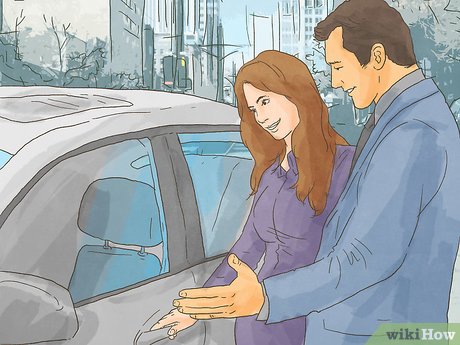
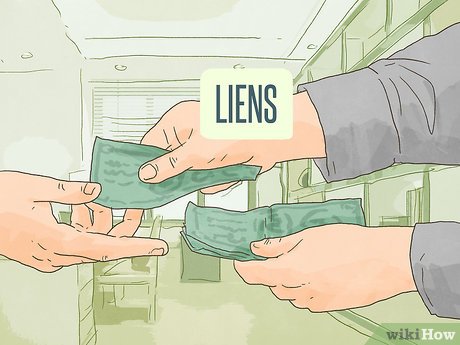

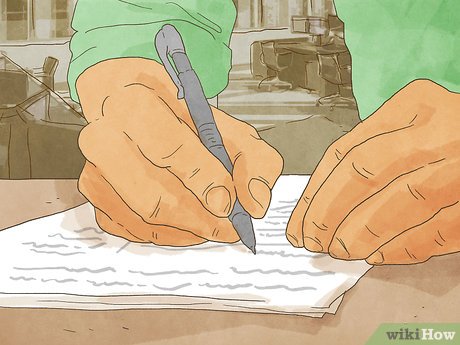


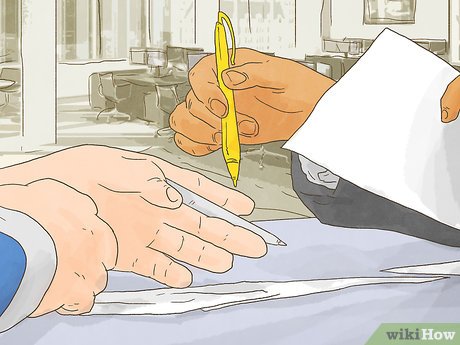





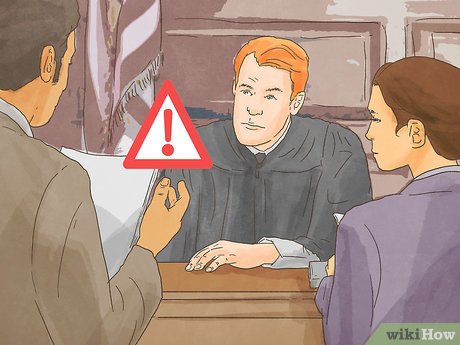











 How to Prove Ownership of Car
How to Prove Ownership of Car How to Retrieve an Impounded Car
How to Retrieve an Impounded Car How to Report Illegal Parking
How to Report Illegal Parking How to Find the Owner of a Vehicle
How to Find the Owner of a Vehicle How to Write a Bill of Sale
How to Write a Bill of Sale How to Get a Title to an Abandoned Vehicle
How to Get a Title to an Abandoned Vehicle